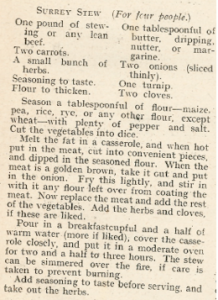Firstly I decided to look at the history behind WW1 and rationing.
Rationing and World War One
Rationing was introduced into Britain at the tail end of World War One - in February 1918. Rationing was introduced in response to an effective U-boat campaign and during World War One, the Defence of the Realm Act (DORA) was used to ensure that food shortages never occurred.
One of the primary aims of DORA, when it was first introduced, was to prevent food shortages. At the start of the war, food shortages were self-imposed as the German U-boat campaign had yet to start. However, at the start of the war people went around panic buying food and hoarding it at home. Some shops sold out of food in days in August 1914. However, after the initial panic buying, people settled down into a routine and food was not a problem until the end of 1916.
Britain continued to import food during the war. The main exporters to Britain were America and Canada. This meant that merchant ships had to cross the Atlantic Ocean. Up to 1916, these merchant ships could travel in relative safety. However, in 1917, the Germans introduced unrestricted submarine warfare and merchant ships were sunk with great frequency. This had a drastic impact on Britain's food supply and with great losses in the Atlantic, food had to be rationed so that no-one starved in Britain. In April 1916, Britain only had six weeks of wheat left and bread was a staple part of most diets. 1916 was a bleak year for families - with the news from the Battle of the Somme and with food in short supply, suddenly the war was brought home to most families. Food prices rose and by October 1916, coal was in such short supply that it was rationed by the number of rooms a family had in its house.
The restrictions introduced by DORA failed and the government then tried to introduce a voluntary code of rationing whereby people limited themselves to what they should eat. The standard was set by the Royal Family. However, this did not work. Those who worked in the munitions factories did not have enough food while anyone with money could get more than enough food on the black market. Any area that could grow food was converted to do so - gardens were turned into allotments and chickens etc. were kept in back gardens.
The powers introduced by DORA empowered the government to take over land when it felt that it was necessary to do so. In 1917, the government took over 2.5 million acres of land for farming. By the end of the war, Britain had an extra three million acres of farming land. Those who would have usually worked the land - young men - had been called up, so the work was done by the Women's Land Army. Conscientious objectors also worked on the land.
Despite the importance of the work done by the Women's Land Army, the government still felt that it was appropriate to warn them about the standards expected of them and their approach must have seemed very old fashioned to some:
A ratio book
This bread, known as K-Brot, was highly unpopular, as it increasingly contained such ingredients as dried potatoes, oats, barley and even pulverised straw.
Food queue in Reading during the First World War. The need to queue was lessened when rationing was introduced during 1918. Rationing also ensured equality of food distribution
All of the posters show various ways in which rationing effected the people of Britain, with ways in which they can help save food, and make food go further.
Looking into exisiting recipe books/cards both from the war (early 1900's) to today.
From the research i can see a common theme in the recipe pages, in the colour schemes and the typefaces used. I need to make sure that I keep my designs fairly similar in both to be inkeeping with the era. However, the recipe books found are fairly boring and are full of information. Which for children is useful but not very interesting on the eye.





















5I-BSSZHloK2g~~60_57.JPG)



No comments:
Post a Comment